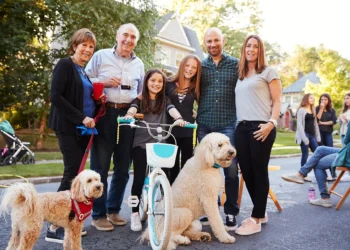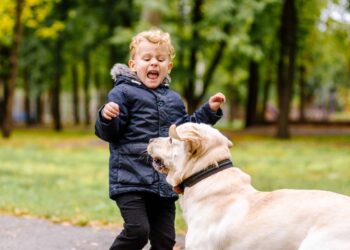Covid changed a lot of things about people’s lives. While most people worked from home and learned how to bake bread, dogs got to enjoy spending lots of extra time with their owners. Of course, now that many businesses are requiring their employees to come back into the office either fully or on a hybrid schedule, you’ll quickly notice that your dog might be having an issue adjusting to your new schedule. From investing in a dog tag tracker to combating separation anxiety, here are some of the best tips to help your dog adjust to your return to work post-COVID!

What Is Separation Anxiety?
Many dogs that grow attached to their owners can suddenly experience what’s called separation anxiety, where they ultimately behave like a small child that’s been left behind by their parents. Separation anxiety isn’t just your typical “cries for a few minutes while in the crate” scenario. Often, dogs suffering from separation anxiety will show the following symptoms:
- Excessive crying/whining
- Chewing/eating items they normally wouldn’t, especially while you’re away
- Pacing
- Trying to escape
- Digging at windows/doors
Dogs that suffer from separation anxiety are basically suffering from a mental illness. And, for some dogs, it makes total sense. During the pandemic, more people requested to adopt dogs than there were available to be adopted and all those puppies became used to lots of bodies in the house with them, always.
As more people return to normal living outside the home, this puts the dogs into a whole new situation that they aren’t prepared for. Separation anxiety isn’t something you can just ignore, either. The problem will get worse over time if you don’t address it, even in mild cases. It’s important to learn what pets can experience and how best to treat it as you return to work. Your dog’s safety is important!

Normalize Your Getting Ready Routine
One of the things that might clue your dog into you leaving is you putting on your shoes or grabbing your keys. However, if you haven’t done this in a while (or you have but never consistently), then you’ll want to start normalizing your getting-ready routine. Getting up at the same time every day, brushing your teeth, getting your lunch fixed and doing other tasks will let your dog know that you’re getting ready to leave.
Of course, a dog with separation anxiety might start to whine or dig at things, but as you normalize your routine, the key here is that you won’t leave. Instead, you’ll do normal activities around your home. This way, you normalize the activities so that your dog won’t realize anything about your actions. Soon, your dog won’t freak out when they see you putting your shoes on.
Don’t Make a Big Deal About Leaving
One of the worst things you can do with a dog that’s suffering from separation anxiety is to make a big deal about your coming and going. This will alert the dog that you’re leaving, making it a much bigger deal than it needs to be. While it can be tough to resist saying goodbye to such a lovable face, it’s important that you avoid it so they can learn to not put so much attention into your leaving and arriving. In fact, when you arrive home, consider ignoring them for a few minutes when you return. This will help them adjust to their schedule with you.
Take Them for a Walk When You’re Home
Before leaving in the morning, take your dog for a walk. Try and get them to play or run a bit so that they’re slightly tired when you all return. Make sure to invest in a quality dog collar and leash set so that your pup stays safe with you out on your daily walks! When you both return, they’ll go to sleep and you can leave while they’re taking a nap. Keeping them busy while you’re home by taking them on walks will get them used to not sitting next to you on the couch or at your feet.
Reading Suggestion: All You Need to Know Before Running with Your Dog
Visit the Vet
Some cases of separation anxiety are so severe that a vet will need to intervene. If you try a variety of solutions but your dog’s behavior doesn’t change, it’s time to get the vet involved. Your dog’s vet can prescribe anti-anxiety medication or give you information on local trainers who could possibly help in ways that you didn’t think of. Plus, if your dog is chewing up clothes and things that could potentially hurt them, taking your dog to the vet to be sure that they haven’t damaged their intestines is one way you can address their separation anxiety.

Give Them a Treat
Dog treats can be used for a variety of things and alleviating separation anxiety is just one of them! Putting peanut butter in a puzzle toy will keep your dog busy while you leave the house, and giving them a small bit of food to munch on while you leave is also a way to keep them busy and not pay attention to you walking out the door.
Make sure you wash their toys out with soap and water every day so that there’s no build-up of bacteria and old food. Puzzle toys are great because they keep your pupper busy but don’t make them frustrated that they can’t solve the puzzle.
Consider a Dog Walker or Doggie Daycare
Not every dog plays well with others, and doggie daycare can be expensive. But, if you have a neighbor who works from home or is retired and willing to help you out, consider asking them to take your pup for a walk during the day while you’re at work or the kids are at school. There are professional dog walkers out there, but they tend to be just as expensive as daycare. Instead, thank your family friend or neighbor with some gift cards!
Reading Suggestions:









